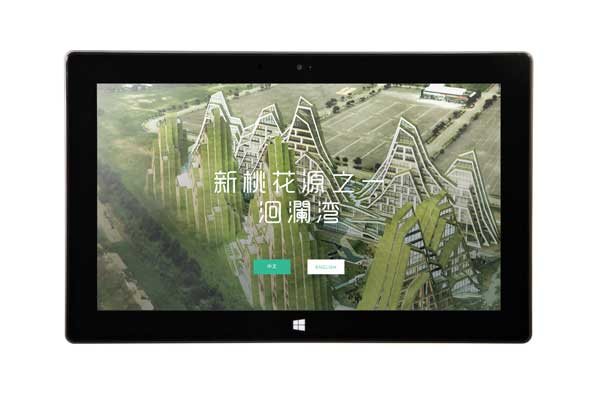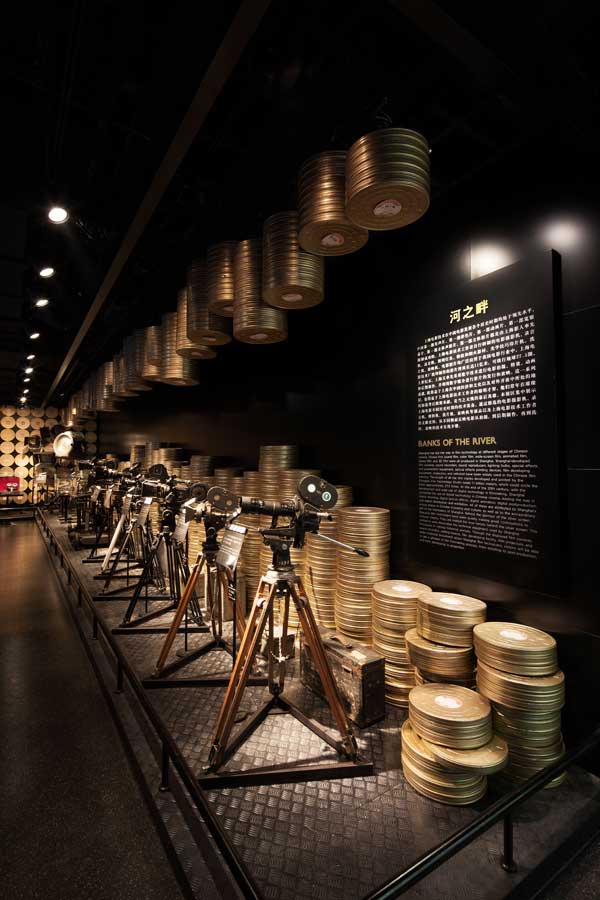How should the design industry do business with the Huaren (Chinese-speaking) Asian market? Leanne Amodeo ponders.

May 7th, 2015
Top Photo: Shanghai Film Museum. Photo: Tilman Thürmer / COORDINATION ASIA Ltd.
As an industry we often use Danish design as a benchmark or look to Italy and the UK for the latest trends and products. These countries have long upheld a fine tradition of craftsmanship and they are leaders when it comes to innovation; our interest in the likes of Hans Wegner, Fabio Novembre or Tom Dixon is perfectly justified. But this singular focus on Western design markets has splintered in recent years as Japanese designers such as Nendo have come to prominence. The greatest shift in today’s global design economy, however, has been the rise of the Huaren (Chinese-speaking) market.
Greater China – the region including Mainland China, Hong Kong, Taiwan and Macau – has experienced swift economic growth in recent decades, coupled with rigorous investment in design. Its focus may have traditionally been on manufacture and production, but the Huaren consumer is now demonstrating an increased appreciation for design – and they are demanding quality. Working with designers equipped to deal with a technologically driven rapidly changing market in order to deliver high-end design outcomes has become a priority.

Shanghai Film Museum by Tilman Thürmer / COORDINATION ASIA Ltd. Photo: Tilman Thürmer / COORDINATION ASIA Ltd.
For these designers (Chinese-speaking or otherwise) the collaboration is not without its challenges: What works? What doesn’t work? What matters to the consumer? The ‘fast’ nature of the Huaren market means designers are constantly trying to keep up with something that, within its very character, is as unpredictable as it is progressive. Conversely, German-born architect Tilman Thürmer describes the Huaren market as “fun and never dull” and is quick to point out its positive aspects. The Shanghai-based founder and CEO of architecture and design studio Coordination Asia has even expanded his practice to include design consultancy in light of recent market demands.
“There’s so much more space for new ideas in the Chinese-speaking market. Clients are open, curious and enthusiastic about projects, which gives us [as designers] so much more freedom,” Thürmer says. While he concedes that in the past there was seemingly a lack of understanding of the meaning and value of design amongst Huaren consumers; today he relishes the opportunity to introduce clients to the idea design is about storytelling, not just decoration, which is especially pertinent to his extensive work in the museum sector. This sense of discovery and invention permeates the growing market’s development, in contrast to the more saturated and matured European market.

Hualien App by Pentagram. Photo: Pentagram
Differences also abound with the US market and this is something many designers, such as Taiwan-born graphic designer Natasha Jen, have identified. The New York-based partner at multi-disciplinary design studio Pentagram has noticed a dramatic spike in enquiries from Greater China in the past 12 months and as a result she currently has eight projects underway in the region, including the complete identity and branding of a new wellness centre in China. Jen’s experience in the Huaren market may not be long, but it is intense – and her transcultural perspective valuable.
“There’s an incredibly concentrated interest in digitally enabled experiences in the US, hence the surge of start-ups and venture capital culture; it’s about the ‘here and now’ rather than ‘elsewhere’,” she reflects. “I don’t say that as a criticism, but I do find that our clients in Greater China have more general interest and a higher level of awareness about what’s going on elsewhere.” This capacity to look outward is what makes the Huaren consumer globally astute and, arguably, open to new ways of thinking.
It’s important when dealing with the Chinese-speaking market to understand it’s not one big homogenous entity; a ‘one size fits all’ design approach simply doesn’t work. Designers must be sympathetic to the region’s multiculturalism and heterogeneity, customising accordingly. As Jen explains, “Each place has it’s own local specificities – cultural, political, economic and social – despite a shared linguistic foundation. My ‘real’ experience of a place comes through working directly with a specific client.” So regardless of incoming trends, the needs and demands of the Huaren market (like most other markets) are determined on a one-to-one basis and design parameters are set within this context.

Shanghai Film Museum by Tilman Thürmer / COORDINATION ASIA Ltd. Photo: Tilman Thürmer / COORDINATION ASIA Ltd.
However, Thürmer predicts there will be an increase in integrated interactive technologies across the market in the near future, as consumers increasingly desire ‘real life’ experiences. While it is pivotal designers keep up with market developments, they must be careful not to completely change their practice in order to do so, something Jen is passionate about. “A design business can’t exist solely to respond to market needs; we’d best be in manufacturing if market was the driver of our business,” she says. “Responsible designers think about the future – markets don’t. We try to think a little ahead of ‘now’ on behalf of our clients and that won’t be changed by the market we are operating in.”
This article first appeared in DQ magazine issue 57.
Coordination Asia
coordination.asia
Design Perspectives
designperspectives.org
Pentagram
pentagram.com
A searchable and comprehensive guide for specifying leading products and their suppliers
Keep up to date with the latest and greatest from our industry BFF's!

Savage Design’s approach to understanding the relationship between design concepts and user experience, particularly with metalwork, transcends traditional boundaries, blending timeless craftsmanship with digital innovation to create enduring elegance in objects, furnishings, and door furniture.

In the pursuit of an uplifting synergy between the inner world and the surrounding environment, internationally acclaimed Interior Architect and Designer Lorena Gaxiola transform the vibration of the auspicious number ‘8’ into mesmerising artistry alongside the Feltex design team, brought to you by GH Commercial.

Create a configuration to suit your needs with this curved collection.

Channelling the enchanting ambience of the Caffè Greco in Rome, Budapest’s historic Gerbeaud, and Grossi Florentino in Melbourne, Ross Didier’s new collection evokes the designer’s affinity for café experience, while delivering refined seating for contemporary hospitality interiors.
The internet never sleeps! Here's the stuff you might have missed

From the trailblazer of Spanish industrial design comes a new collection of recycled rugs – a powerful exploration of the concept of waste, a keen celebration of imperfection, and a new underfoot symbol of responsible design.

Swiss home appliance designer and manufacturer V-ZUG’s first Sydney studio is a unified expression of the brand’s boutique, sustainable and design-led identity.

Savage Design’s approach to understanding the relationship between design concepts and user experience, particularly with metalwork, transcends traditional boundaries, blending timeless craftsmanship with digital innovation to create enduring elegance in objects, furnishings, and door furniture.